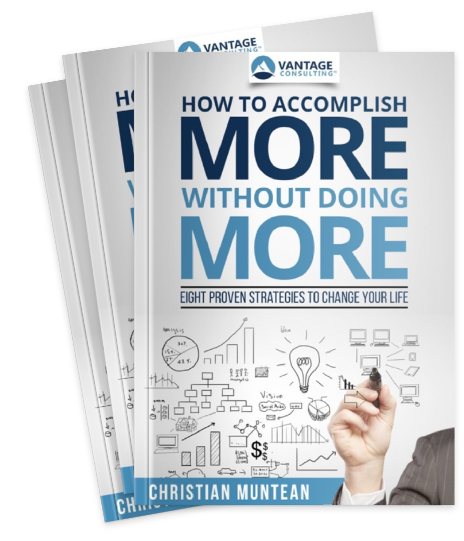Doctor’s Orders: “Go Hurt Yourself.” What Pain Can Teach You About Leadership

I had shoulder surgery a few months ago. Because everyone seems to enjoy hearing about my pain, here you go:
I had shredded my shoulder. So they cut the bicep off from where it normally attaches on the shoulder, drilled a hole into my humerus, and reattached the tendon there.
As I told my surgeon, “Please fix me so I can go back to doing stupid things.”
Fortunately, he understood. His previous job was putting Navy SEALs back together. I’m no SEAL—but I do want to get back to Brazilian Jiu Jitsu (BJJ). For that to happen, I had to seek discomfort.
I’ve been doing my physical therapy consistently. Recently, my therapist did an updated assessment. Thankfully, I’m healing ahead of schedule.
But the kind of assessment she needed couldn’t be done in the office. She needed to see if I was ready for the specific stresses of BJJ—a sport where practice includes trying to tear shoulders apart.
After months of telling me what not to do, she gave me surprising homework:
“Go back to Brazilian Jiu Jitsu. Tell me what hurts.”
My very first day back, we practiced kimuras—a technique that specifically targets the shoulder. Great timing, right?
Seek Discomfort: Leadership Growth Starts With Controlled Stress
You should regularly test yourself, your team, your systems, and your culture to find out what hurts—before something breaks.
Put yourself or your organization into controlled but stressful situations. Use those experiences to evaluate, adapt, and grow. It’s an intentional way to seek discomfort before discomfort seeks you.
What Is a Controlled, But Stressful Position?
It’s a stress test. But it’s limited—don’t stress everything at once, and don’t push to the breaking point. Just enough to reveal weaknesses or vulnerabilities.
For me, that meant drilling techniques, practicing the move of the day, and stepping off the mat before full-speed sparring.
The stressful part? Trusting others with my healing arm. I didn’t know what would happen. But I needed to try—and feel it out. Another opportunity to seek discomfort, learn, and adjust.
What Might This Look Like for Your Business?
-
Taking on a larger-than-usual client or project
-
Writing (or enforcing) a long-avoided policy
-
Assigning someone a single new responsibility
-
Expanding services slightly
-
Testing a new strategy
-
Finally addressing a lingering conflict
My favorite stress test for owners and executives?
Take a vacation.
The simple act of going away—and becoming unavailable—will surface all kinds of insights:
-
How well are your systems defined?
-
Where are people overly dependent on you?
-
Where is your team ready (or not ready) for more responsibility?
When you take a step back, even for a short time, you’re choosing to seek discomfort in service of long-term resilience.
Evaluate and Grow
I met with a client this week—partners who want to build a business that lets them each take extended time away.
I said, “Great. Each of you schedule a two-week vacation this year.”
They stared at me. As if I were being absurd.
Then came the excuses.
Just the thought of a vacation was painful. Good.
That tells us where to start. These are the small hurts we need to understand.
We’ll start to identify the fears, unbuilt systems, identity issues (“This place can’t operate without me!”), staffing needs and trust gaps we need to address.
We’ll start small and build from there. Maybe two weeks is too much right now. Fine—we can scale it back.
But the principle stays the same:
If you want something different, you have to do something different.
And different often means discomfort.
When leaders are willing to seek discomfort, they open up room for deeper trust, stronger systems, and more sustainable success.
Don’t Get Distracted by Discomfort
Discomfort is a signal—not a stop sign. It’s telling you where to look, not where to quit.
Here are a few better ways to frame it:
-
Discomfort is feedback. Listen to it, don’t run from it.
-
Discomfort isn’t a problem. It’s your teacher.
-
Discomfort is the body’s—and the business’s—way of saying, “Pay attention.”
If you’re not intentionally creating opportunities to seek discomfort, you’re waiting for discomfort to force your hand.
Reflection Questions
-
What’s one controlled risk we could take this quarter?
-
Where are we avoiding discomfort—and what might it be trying to tell us?
-
If I took a two-week vacation starting next Monday, what would break?
-
What’s one area we should stretch—and see what happens?
-
What systems or people would benefit from a stress test?
What Hurt for Me?
Turns out, not as much as I expected. I stayed controlled. I kept the exposure minimal.
But takedowns were where I felt the most discomfort—especially moves that involved reaching while managing pressure from odd angles.
I’ll take that data back to my PT and see what she says.
But honestly… I was just thrilled to be back in it.
That joy of re-entering something hard is another reason to seek discomfort—because it reveals not just weaknesses, but what we deeply value.
Next Step
I help leaders use stress—intentional, controlled stress—to surface weaknesses before they become liabilities.
If you’re ready to build a business that’s not just bigger but stronger, let’s talk.
(And maybe, finally take that vacation you’ve been putting off.)
Take good care,
Christian
Categories
Get Christian’s Newest Book: Train to Lead

Download my free 10-page eBook:
How To Accomplish More Without Doing More:
Eight Proven Strategies To Change Your Life
Discover how to save eight hours during your workweek-even if you're too busy to even think about it. The resource every maxed out executive needs.